- Home
- Jason Webster
Violencia Page 13
Violencia Read online
Page 13
Before its capture by Alfonso VI in 1085, Toledo had been a taifa kingdom where a mixed community of Muslims, Jews and Arabised Christians (‘Mozarabs’) lived in relative harmony. And following the example of the other Islamic statelets, its rulers had placed great emphasis on cultural achievement. The groundwork for an intellectual blossoming had therefore already been laid when, in a surprise move, the city fell into Christian hands.
The fall of Toledo led directly to the arrival of the fundamentalist Almoravids in Al-Andalus and a partial eclipse of Moorish culture. Yet it also meant that the torch of inquisitiveness and brilliance which had so characterised the Andalusi Golden Age passed to Christian Spain, with Toledo as its new heart.
The School of Translators is an umbrella term used to describe a movement which began in Toledo in the early twelfth century and continued for some one hundred and fifty years, developing and changing in complexion until it was brought to an end by King Sancho IV in the thirteenth century. Its objectives and methods were not unique: it echoed the translation ‘school’ which had been established in Cordoba under Abd al-Rahman III in the mid-tenth century, which in turn had mirrored similar movements in the central lands of the Islamic Empire of the ninth century. But it was the first time that anything on such a scale had been set up within Christian Europe.
As with Cordoba and the arrival there of the works of Dioscorides in 949, the Toledo translation movement was born out of intellectual curiosity and openness mixed with an underlying sense of (at least partial) inferiority: Christians understood that the Moors were significantly more advanced in certain areas, and wished to catch up with them as quickly as possible. A similar spirit had infused the mass translation of Greek knowledge into Arabic centred around Baghdad from the eighth century. The capture of a sophisticated Moorish capital like Toledo only underlined their cultural deficiencies to eleventh-century Spanish Christians, despite following, in their own eyes, the true faith. And the respect which they had for their Muslim contemporaries can be seen in an anecdote concerning the main mosque in the newly captured city:
On taking possession of his new prize, King Alfonso, who termed himself ‘Emperor of the two religions’, swore to protect the Muslim population, in particular not to touch the main mosque. Shortly afterwards, however, he was called away to Sahagún, the Cluniacs’ Spanish headquarters. In his absence, Alfonso’s queen – Constanza, a Frenchwoman – connived with the new archbishop, Bernard, also from France – to take the mosque and turn it into a cathedral. In the words of a later chronicler:
The Christian troops entered the main mosque of Toledo and, having purged it of the filth of Muhammad, set up a Christian altar and placed bells in the minaret so the Christians could be called to worship.
Up in Sahagún, Alfonso heard of what had happened and rushed back to Toledo, a journey of three days. He was so furious that his agreement with the city’s Muslims had been broken that he was determined to burn the archbishop and his own queen at the stake as punishment. The Muslims, however, were the ones who restored peace. Such an action, they pleaded with Alfonso, would only bring more violence on their own heads in revenge, and so they begged him to be lenient. Alfonso agreed, and the mosque continued to function as a cathedral.
What’s interesting to compare here is the tolerance of the Spanish Alfonso with the more aggressive attitude of the French queen and archbishop. The Muslim and Christian communities may have been at war for much of the time (as well as between themselves), but organised persecution was still in its infancy. It would develop quickly within Al-Andalus with the arrival of the Berber fundamentalists, and would eventually become a dominant trend within Christian Spain. Before it did, however, a brief window of relevant tolerance allowed the creation of a world-changing movement.
The School of Translators began under a later archbishop – Raymond, another Frenchman, this time a Benedictine from Gascony. Some time after taking up his position in 1126, Raymond started to bring together Muslim, Jewish, Mozarab and Cluniac scholars with the intention of translating texts from Arabic via Castilian into Latin. The centre of this activity was the library at the cathedral, now housed in what had been the main mosque and containing many books which had been collected during the Muslim period. It was an obvious step to start translating them in order to unlock their secrets. The process was haphazard and anything but systematic, but in general the Arabic speakers would perform an oral translation of a book into Castilian which was then retranslated into Latin and written down. Jewish members of the teams often acted as linguistic intermediaries.
The school had a tremendous impact within Christian Europe. Combined with a similar movement developing in Sicily and southern Italy in the wake of the Norman conquests there, it suddenly opened up a whole wealth of knowledge which had been lost or out of reach to Latin-speaking communities for centuries. As at Cordoba in the 940s, knowledge of Greek had all but vanished. Now the works of the great minds of the Classical past were once again becoming available via earlier translations of them into Arabic.
It didn’t take long for news to spread throughout Europe, and soon scholars were arriving at Toledo from around the Continent, eager to be involved in this new and very exciting project. The most celebrated of them was Gerard of Cremona, who came from Italy in around 1140, remaining in Toledo until his death in 1187. He was originally drawn by hearing that in Spain he could find a copy of a book he longed to read: Ptolemy’s great astronomical work, the Mathematika Syntaxis. This had been translated previously into Arabic, with the title Al-Majisti, which in turn gave it the new name under which it became known in Europe, the Almagest.
An obituary of Gerard, written by one of his pupils, explains:
For love of the Almagest, which he could not find at all among the Latins, [Gerard] went to Toledo. There, seeing the abundance of books in Arabic on every subject, and regretting the poverty of the Latins in these things, he learned the Arabic language in order to be able to translate. In this way he passed on the Arabic literature in the manner of the wise man who, wandering through a green field, links up a crown of flowers, made not just from any, but from the prettiest. To the end of his life he continued to transmit to the Latin world (as if to his own beloved heir) whatever books he thought finest, in many subjects, as accurately and as plainly as he could.
In total, Gerard alone translated seventy books into Latin, including twenty-four on medicine, eighteen on the stars and alchemy, seventeen on various areas of mathematics, eleven on philosophy and three on logic. And he was not alone: Toledo at this period became a magnet for other brilliant people from around Europe who thirsted after the knowledge available there. Another celebrated example is Michael Scot, who arrived around 1215 after leaving Oxford. A leading astrologer and alchemist, Scot eventually established himself at the Sicilian court of Frederick II (with whom he supposedly had an affair), but not before translating several books by Averroes, particularly the Cordoban philosopher’s commentaries on Aristotle. What makes this even more remarkable is that Averroes himself had only died in 1198: the flow of knowledge from Muslim to Christian orbits was unhindered and almost immediate.
Much of the knowledge which reached Europe via Toledo at this time has had a powerful effect – and continues to do so – on our modern world. For example, algorithms govern much of our daily lives, and the name for them derives from the Persian mathematician of the ninth century Al-Khwarizmi. His works, which also give us the word ‘algebra’, were translated by Gerard and others and subsequently found their way across Europe, making Al-Khwarizmi – or Algoritmi, in the Latinised version – the most widely read mathematician on the Continent in the Middle Ages.
The Toledo translation movement went through various stages. After intense activity through the twelfth century, it entered a transitional phase before being reinvigorated under Alfonso X in the thirteenth century.
Alfonso, known as el Sabio, ‘the Wise’, is one of the most important figures to emerge from this period
. Politically, he wasted vast amounts of money and energy on an unsuccessful attempt to be crowned Holy Roman Emperor, but culturally he placed his stamp on Christian Spain through his promotion of numerous writing projects. As well as reviving the School of Translators in Toledo, he commissioned (and even helped to write) several important books. These included: Las Siete Partidas, an attempt to synchronise the country’s laws; and the Estoria de España, a history of the Iberian Peninsula. In what was in effect a mini-renaissance before the Renaissance, Alfonso revived an ancient Spanish tradition dating back to the Golden Age of Umayyad Cordoba and St Isidore’s Seville of turning his country into a powerful cultural centre. And as at Cordoba in the ninth and tenth centuries, now Christians, Muslims and Jews were drawn together to collaborate in the enterprise, not only at Toledo but also at newly conquered cities such as Murcia, where Alfonso established a university run by the mathematician and physician Muhammad al-Ricotí, and Seville, where he set up a school of Arabic studies. Salamanca and Palencia also became university cities during his reign.
Alfonso also did his best to establish what might be considered the beginnings of a modern state, with the monarch holding supreme power at the centre. He introduced a basic justice system, put governors responsible to him in positions of authority in the various provinces of his kingdom, and established a cabinet in the shape of a Royal Council. In addition he created La Mesta, an organisation controlling the sheep and wool industry, which became Castile’s biggest cash earner for centuries to come. This was based on merino wool1, which was in high demand in Europe thanks to its exceptional thermal qualities. Moneys brought in from the trade helped to pay for the construction of the cathedrals of Burgos and León, both jewels of Spanish Gothic architecture.
The School of Translators in Toledo was reinvigorated under Alfonso, who brought in several changes. This time books in Arabic were translated directly into the local vernacular, laying the foundations of modern Castilian Spanish as it is spoken and written today. The texts were largely mathematical and scientific works as before, but this time also included stories and fiction, such as the classic ancient Indian collection of animal fables Kalila and Dimna (or Panchatantra), a guide to precious stones and their medical properties known as the Lapidario, and books on chess and other games. Jewish translators became very prominent at this time, assisting with the translations of many astronomical and astrological books, and in drawing up the Alfonsine Tables, a highly important work which compiled observational data allowing the computation of the Sun, Moon and planets based on the position of the fixed stars. Copernicus later owned a copy of these, and in conjunction with his study of the Toledo translation of the Almagest he later developed his revolutionary theories about a heliocentric universe.
The impact of the School of Translators cannot be overstated, introducing both Greek and Oriental science, philosophy and culture to Europe and eventually inspiring the revival of Greek scholarship which was one of the principal drivers of the Renaissance, and later of the Reformation. Despite being wracked by civil wars, through the twelfth and thirteenth centuries the Peninsula became the key link in a chain of knowledge running from East to West, not least the works of Aristotle, travelling from Athens to Averroes’s Cordoba and thence to Toledo and the rest of Christian Europe. In the process, it changed the intellectual foundations of the West. The works which emerged from the school provided the raw material for the Continent’s great minds of the later Middle Ages, from Albertus Magnus to Thomas Aquinas and Roger Bacon, who even wondered around Oxford dressed in Arab robes in a symbolic act denoting the origin of much of his inspiration, namely the learning arriving from the Islamic world via Toledo.
The Toledo of the translators was another of Spain’s many beacons of light which shine brightly for limited periods of time in the country’s history. Umayyad Cordoba had been one before, as had the Seville of St Isidore in the sixth century. But as with its predecessors, Toledo’s time was short: Alfonso’s successor, his son Sancho IV, was at war with his father, and following a pattern the forces of light were brought into violent civil conflict with those who would extinguish them. When Sancho finally emerged victorious, he quickly dismantled the School of Translators, and many of the scholars who were involved left the city. Toledo would never regain its position as a European cultural hub. Santiago the Slayer had once again defeated his more inquisitive pilgrim self. Indebted to his supporters, Sancho’s reign also saw supreme royal power ebb away, flowing back into the hands of aristocrats and local magnates. It would take two hundred years for the crown to claw it back.
The openness which had characterised Toledo had come to an end, replaced by an intolerant and persecuting culture which seized the entire Peninsula, and which would go on to create one of its most lasting and infamous legacies.
1 The name derives from the Berber Merinid tribe.
PART THREE
1492
THE ROAD TO 1492
Events in Spain in the year 1492 seem to hint at the existence of a ‘hidden hand’ moving history in a certain direction. This is the country’s pivotal moment, the year in which modern ‘Spain’ is conceived, when many defining and revolutionary developments occur in a startlingly concentrated period of time. The suddenness of change is an essential part of the patterns of Spanish history: an explosive reaction within the crucible after years of increasing agitation. The year 1492 is one of the most significant of these moments, and it changed not only Spain, but the rest of the world.
Moorish-controlled territory shrank rapidly following the Almohad rout at las Navas de Tolosa. For Castile, Fernando III captured Cordoba and Seville, while in the east Jaime I of Aragon simultaneously pushed southwards, taking Valencia and the Balearic Islands. Christian Spaniards had the momentum, and were in a position to conquer all remaining Muslim lands in the Peninsula. But instead, after making huge advances, they stopped. Skirmishing would continue and a few towns and cities would exchange hands, but effectively from 1250 to the late 1400s the borders remained static between the Christians and a last rump of Al-Andalus clinging on around the Sierra Nevada mountains in the kingdom of Granada.
As mentioned earlier, this period is known in Spanish history as los cinco reinos – ‘the Five Kingdoms’, these being: Castile, Leon, Portugal, Navarre and Aragon. It’s a curious term, as in fact there were several more, and the number had a tendency to change. Granada was a kingdom, and the ‘kingdom’ of Aragon was actually a confederation made up of the kingdom of Valencia, the county of Barcelona and the kingdom of Aragon proper (as well as other territories in the Mediterranean, including Sardinia, Sicily, Naples and, for about a hundred years, Athens). Meanwhile, Castilla and Leon would form a single kingdom from 1230. So in fact we should be talking about the period of the ‘Six to Seven Kingdoms, Depending’, although that doesn’t have quite the same ring to it.
Following the culturally enlightened reign of Alfonso X, multiple civil wars marked the fourteenth and fifteenth centuries. The most important took place during the reign of Pedro ‘the Cruel’. As well as being a homicidal maniac, Pedro was friends with the Nasrid kings of Granada, and it was thanks to this not unusual alliance that the Alcázar palace at Seville was built during his reign in Moorish style by artisans lent by the Muslim monarch. While happily swapping interior design tips with his neighbours, however, Pedro was at war with his half-brother, who claimed the crown for himself. The conflict was complicated by Europe’s Hundred Years’ War, and for a time England’s Black Prince journeyed to the Peninsula to fight alongside Pedro.1
English support notwithstanding, Pedro eventually came to a sticky end when he was ambushed in his own tent during the siege of Montiel. His half-brother, Enrique, finished the job.
Enrique’s reign brought the Trastámara family to the throne. It was they, in conjunction with another line of the same family, who would bring about the famed union, almost a century later, of the crowns of Castile and Aragon which would lay the foundations of the mod
ern Spanish state.
But before that could take place, many more civil wars were to come.
1 According to some theories, as a result of his Spanish sojourn, the Black Prince took back home with him Morris Dancing, ‘Morris’ originating from ‘Moorish’. My own observation of traditional dances at the Valencian town of Algemesí would support this view: in dress as in choreography, the similarities with English Morris dances are striking, although the Spanish version is more vigorous and passionate than its English counterpart.
NO MOOR
On 2 January, the second day of the fateful year 1492, Queen Isabella of Castile and her husband King Ferdinand of Aragon arrived in Granada as conquerors. The defeated Moorish King Boabdil had handed over the keys to the city and prepared to leave with his family, now protected against his own people by Christian troops. After eight hundred mixed but often glorious years, Moorish Spain had come to an end. As he departed into exile, Boabdil looked back at the jewel he had lost – the city and its magnificent Alhambra fort – and wept. And coining a phrase which Spanish parents repeat to their blubbing offspring to this day, his mother Fatima rubbed salt into his open wound: ‘Cry like a woman,’ she said, ‘for what you were unable to defend like a man.’ Thereby sealing Boabdil’s public image as one of the greatest wimps in history. For the Moors, it was over. Christian Spain was finally triumphant. The ‘Reconquest’ – a centuries-long Spanish civil war – was complete.
Over the next few months, things were going to move very quickly. But before we go forward, we must rewind a little to see how we got here. How did this momentous event come about?

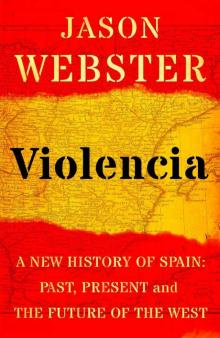 Violencia
Violencia Or the Bull Kills You
Or the Bull Kills You The Killing of El Niño Jesús
The Killing of El Niño Jesús The Spy with 29 Names
The Spy with 29 Names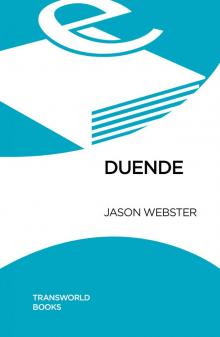 Duende
Duende Guerra
Guerra Sacred Sierra
Sacred Sierra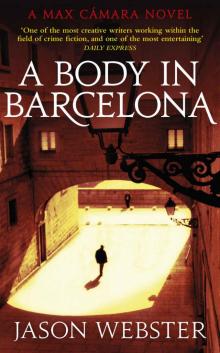 A Body in Barcelona: Max Cámara 5
A Body in Barcelona: Max Cámara 5 Fatal Sunset
Fatal Sunset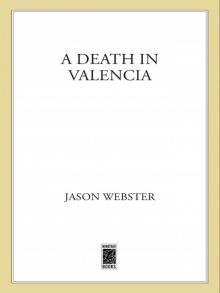 A Death in Valencia
A Death in Valencia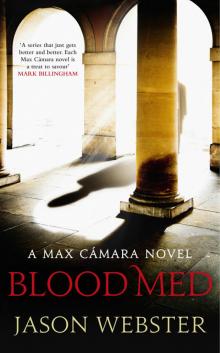 Blood Med
Blood Med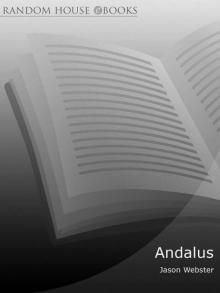 Andalus
Andalus